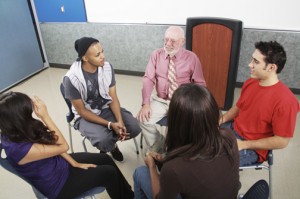 Many alcoholics and addicts first experience Twelve Step fellowships while they’re participating in a course of professional treatment. It’s no secret that a majority fail to ‘stick’ at that initial exposure. Usually that’s blamed on AA or NA. But I’d argue it’s because of the clumsy way we make the introduction.
Many alcoholics and addicts first experience Twelve Step fellowships while they’re participating in a course of professional treatment. It’s no secret that a majority fail to ‘stick’ at that initial exposure. Usually that’s blamed on AA or NA. But I’d argue it’s because of the clumsy way we make the introduction.
Alcoholics and addicts who become actively involved in these fellowships benefit from that involvement, particularly with respect to long-term abstinence from substances. It’s only logical that treatment professionals seek to facilitate this.
Three suggestions for making that happen:
First, recommend the right meetings.
The fellowships are highly unstructured (and proud of it). It’s a key to their popularity. Still, that means great variation among groups. Some are welcoming to newcomers, others not so much. It’s easy to get a bad first impression simply by attending the wrong meeting. I don’t know how many relapsers I’ve encountered whose sole exposure was limited to a few meetings at one or possibly two groups, after which they decided ‘it’s not for me’. That’s like visiting the local Wendy’s and concluding that all restaurants must serve the same fare.
It’s worth the effort to work with your local AA/NA Intergroup to identify the meetings that are most likely to welcome newcomers. Select different types of meetings to match with your clients. Make sure there are some single-gender groups — that’s often an important consideration for a newcomer.
Second, orient your client to the fellowships.
AA and NA can be confusing. Time and again newcomers have complained that meetings seemed cliquish, used unfamiliar lingo, practiced odd rituals. Based on these superficialities, the newcomer concludes he ‘doesn’t fit’. If he’s new to recovery, he probably does fit, but doesn’t yet realize it. He’s stuck on appearances. We need to help him see below the surface.
Two approaches I’ve seen programs do successfully:
- Build a core of volunteers willing to take people to meetings and to help orient them
- Have meetings at your program site, as a ‘safe’ way to initiate participation.
Third, improve your own understanding of the fellowships.
I’m often amazed at how little counselors and therapists know about the 12 Step fellowships, and indeed, at the many misconceptions they have. That might be even more common with the influx of college and graduate trained professionals who themselves have little direct experience of AA or NA. That’s easily remedied with a little effort– you have to get out and see for yourself.
AA and NA weren’t designed by professionals and they do not operate like professionally-developed behavioral therapy programs. One difference: The emphasis is on learning by doing. You might compare it to driving a car. That’s not something most of us can learn from a lecture or role-play or even a few practice runs. We need to practice over time, and that’s what ongoing attendance and sponsorship are all about.
The experience of the fellowship changes as the months pass. Or as one member put it: “the AA I attended when I was six weeks sober is not the same AA I attend now that I’m three years in. AA may not have changed, but I did.”
I’d argue that a free, readily accessible, widely available peer resource is exactly what’s required to translate the short-term gains of professional treatment into lasting recovery. It isn’t the answer for everyone– what is?– but it’s foolish to pretend it’s not essential for a great many.
So why not make better use of it? All that’s required is a little effort.








